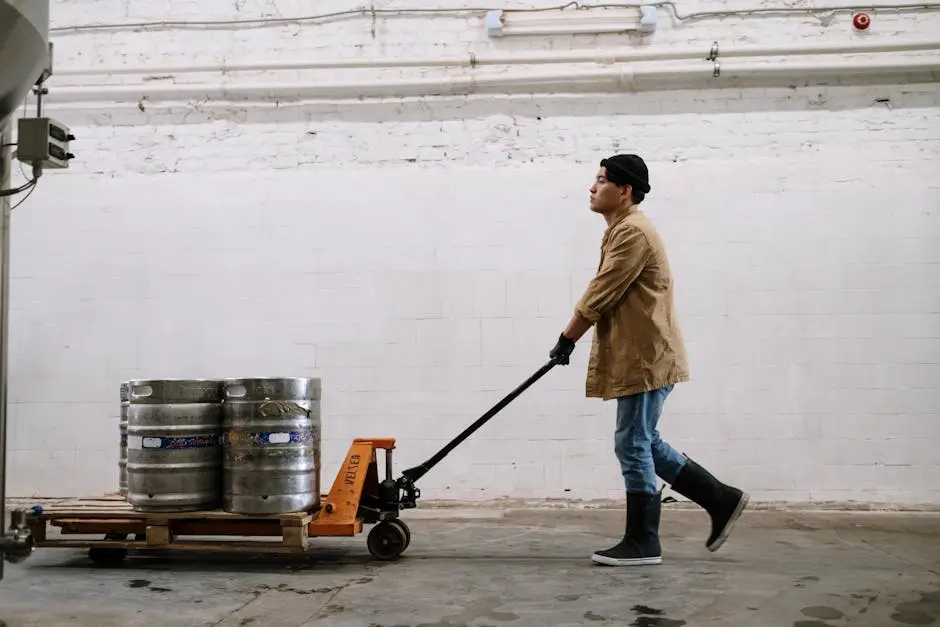Are Steel-Toe Work Boots Necessary for Men?
Share
Steel-toe work boots are often associated with heavy-duty professions and rigorous job sites. If you’re wondering whether they are essential for you or someone you know, you’ve come to the right place. Let’s walk through the key considerations to help you determine if investing in a pair of steel-toe work boots is necessary.
What are Steel-Toe Work Boots?
Steel-toe work boots are durable shoes designed with a protective reinforcement in the toe box to safeguard against falling objects and compression. They are widely used in industrial settings.
These boots emerged from necessity, particularly in industries where accidents involving heavy materials can happen. The steel in the toe provides a sturdy shield, preventing serious injuries that might be caused by dropped tools or machinery. But their use isn’t just limited to industrial sectors. Many find them beneficial in domestic situations where robust foot protection is appreciated.
With advancements over the years, steel-toe boots now come in various styles and designs, catering to different needs and preferences. From classic leather designs to more modern and athletic styles, the options are vast. While aesthetics might vary, the core purpose remains the same—providing safe and reliable protection for the feet.
Benefits of Wearing Steel-Toe Work Boots
These boots provide excellent protection, reducing the risk of foot injuries in hazardous conditions. They also offer strong support and stability, making them ideal for long hours on tough terrains.
Beyond just protection from impacts, steel-toe boots also offer resistance to penetration from sharp objects like nails or shards of metal. This is crucial for those working in environments littered with debris or construction remnants.
Another often-overlooked advantage is their ability to provide insulation. In cold temperatures, a well-made pair with proper lining can help keep your feet warm, reducing the chance of numbness or frostbite during long shifts outside.
These boots are designed to endure. Made with materials like leather and rubber, they not only last longer in tough conditions but also require minimal maintenance. A quality pair can withstand years of wear and tear, offering long-term savings over less durable alternatives.
Potential Drawbacks of Steel-Toe Work Boots
While they offer maximum protection, steel-toe boots can be heavy and less flexible, which might lead to discomfort or fatigue if worn for extended periods without breaks.
The rigidity of the steel can also mean that the toe area is less forgiving, potentially resulting in discomfort if the boots are not sized correctly. Breaking in a new pair might take some time, and without proper care in choosing the right fit, the user may experience blisters or sore spots.
Price can also be a factor. High-quality steel-toe work boots tend to be more expensive than their softer counterparts due to the materials and construction techniques used to ensure their protective capabilities.
Assessing Workplace Requirements
Before deciding, consider if your job role specifically mandates steel-toe boots. Many industrial and construction sites require this type of footwear as a part of their safety protocols.
Employers might have specific standards, especially in regulated industries. Occupational Safety and Health Administration (OSHA) guidelines often dictate the necessity of protective footwear, and non-compliance can lead to fines or penalties for both employees and companies.
Consulting with your employer or safety manager can provide clarity on whether steel-toe boots are necessary or if alternatives may suffice. Understanding these requirements ensures that you stay protected and compliant while on the job.
Alternatives to Steel-Toe Work Boots
For those who seek lighter options, composite toe boots can be a suitable alternative, offering similar protective features without the weight of steel.
Moreover, composite toe boots are metal-free, making them ideal for workplaces that have metal detectors or require non-conductive footwear. They’re often designed with materials like Kevlar or carbon fiber, ensuring a balance between protection and weight.
Soft-toe work boots still provide a level of sturdiness suitable for less hazardous environments. Made with durable leather or synthetic materials, they offer more comfort and flexibility while retaining some degree of protection.
Making the Right Choice for Safety and Comfort
Deciding whether steel-toe work boots are necessary depends on the specific job requirements and the level of protection desired. By understanding the benefits, potential drawbacks, and workplace requirements, you can make an informed choice that prioritizes safety and comfort.

